
The announced closure of Toyota’s assembly operations signals dark days ahead for the Victorian economy. In addition to the loss of 2,500 assembly line jobs from the Toyota plant in Altona by 2017, there are estimated to be up to another 40,000 employed in the components industry, most of them in Victoria, that will also lose their jobs.
When combined with Ford’s announced closure last year, with a total of 1,200 job losses expected in Geelong and Broadmeadows by 2016, as well as thousands of potential job losses in the Goulburn Valley region in the event that SPC Ardmona closes its operations, it is clear that Victorian manufacturing – once the mainstay of the state economy – is in its terminal phase.
A quick glance at the employment data for Victoria shows that manufacturing was already in dire trouble prior to the announced car industry closures. As shown in the next chart, the total number of Victorians employed in manufacturing had already fallen by 100,000 since 1984, with the share of employment in manufacturing having also fallen from 21% to 9% over that period:
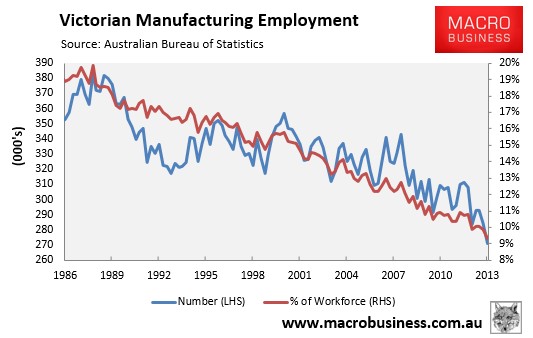
The question now is whether anything can pick-up the slack as Victorian manufacturing takes another leg down?
Over the past six years, Victoria’s economic model seems to have been built around endless population growth, with the state leading the nation (see next chart).
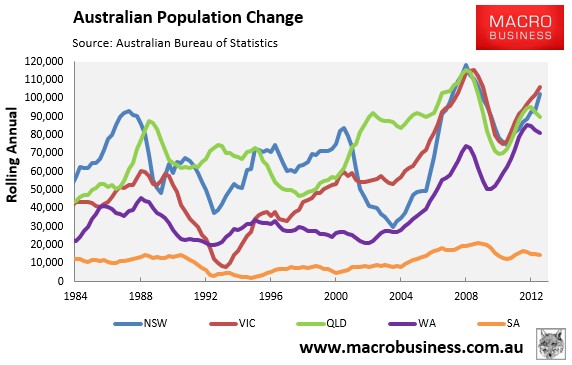
The circa 100,000 arrivals into Victoria each year has provided fertile demand for housing, to which the state has readily obliged with a nation-leading dwelling construction boom:
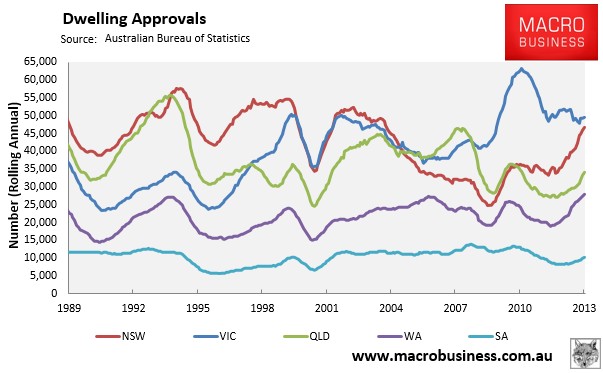
This boom in dwelling construction has provided strong support to construction jobs, which have risen by around 50% as a share of total employment over the past 20 years:
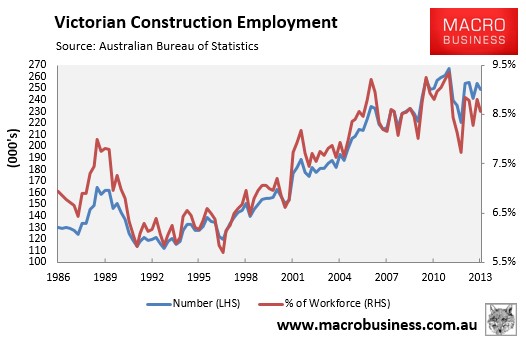
However, there are two problems with Victoria’s population-based economic model.
First, while strong population growth (immigration) has supported overall gross state product (GSP), the actual share enjoyed by each Victorian – GSP per capita – has shown no growth since 2008 (see nect chart). So in a purely material sense, Victorians have treaded water for nearly six years.
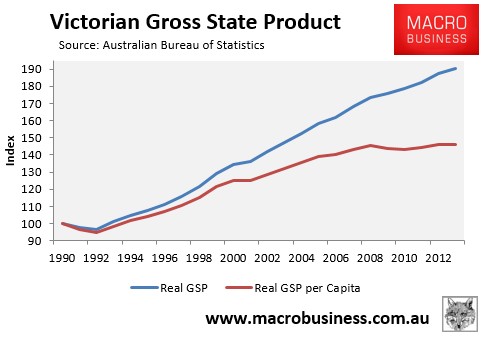
Second, the model only works as long as the state continues to build homes at a fast rate. As soon as dwelling construction slows, construction jobs will be lost. In this sense, Victoria’s economy is like a dog chasing its tail.
With Victorian unemployment already above the national average and rising (see next chart), tens-of-thousands of manufacturing job losses on their way, and the rate of dwelling construction unlikely to be maintained at its current rate, there is an employment shock coming to Victoria.
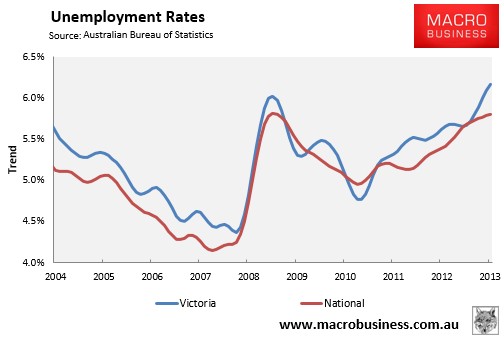
With it comes serious questions about how the state can create an economy based on real and sustainable growth, rather than ponzi growth via immigration.
These are questions that all Australians should be asking as well.

